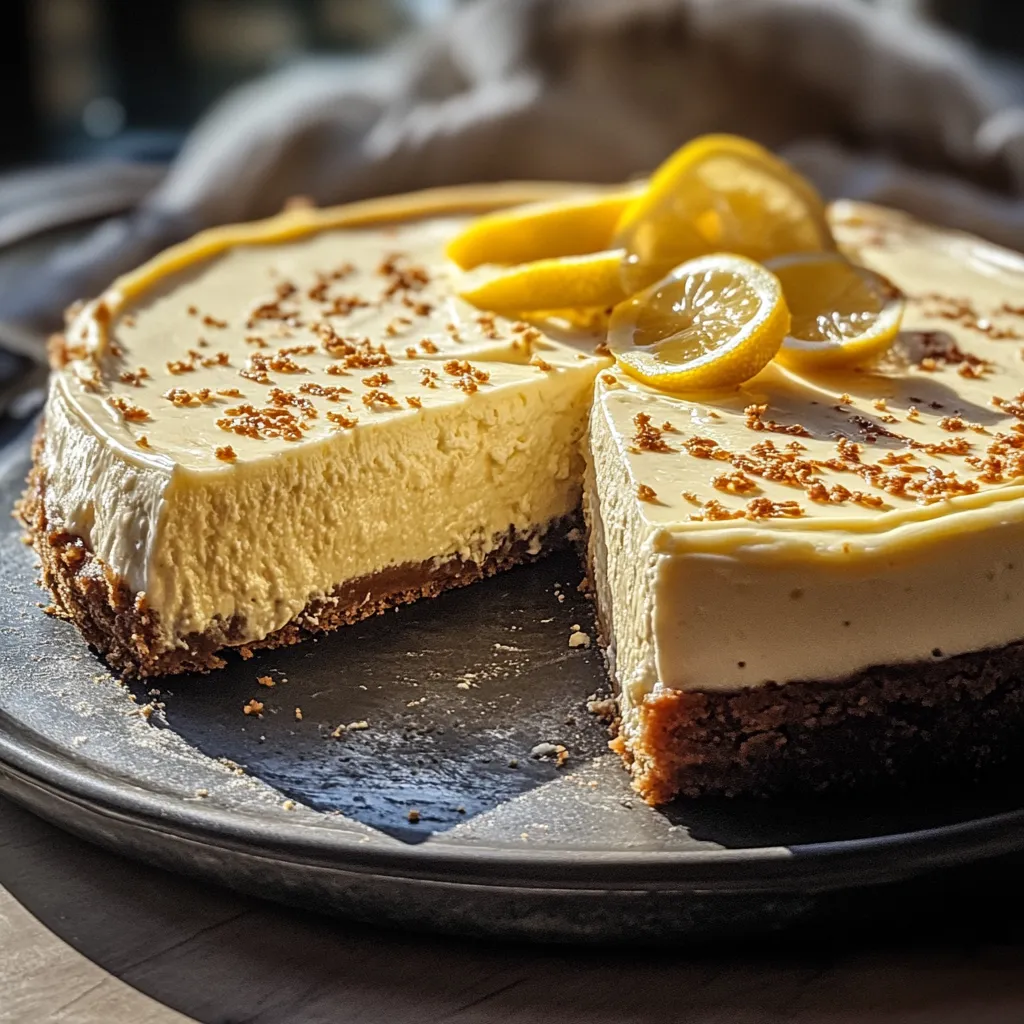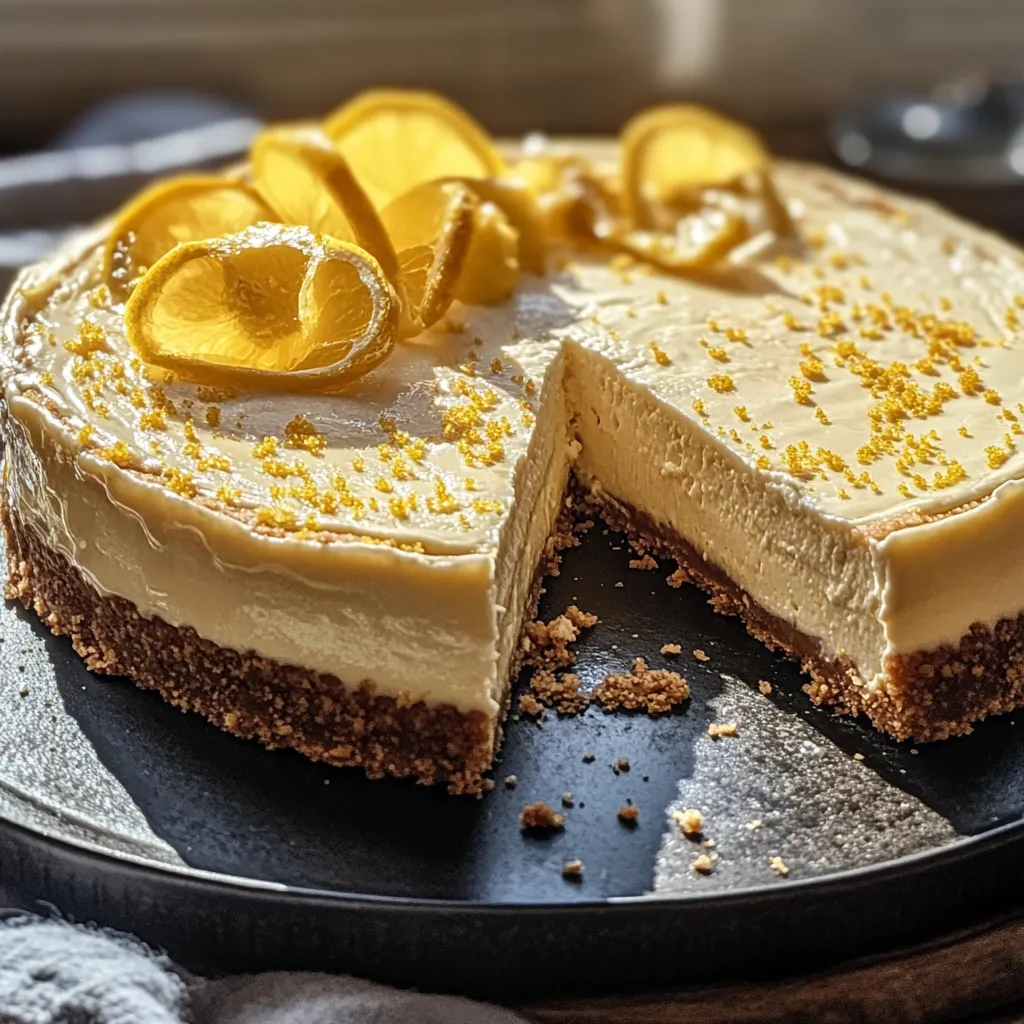 Pin it
Pin it
This creamy, indulgent cheesecake recipe has become my signature dessert for gatherings and celebrations. The perfect balance of tangy and sweet flavors with a buttery graham cracker crust creates a dessert that consistently earns rave reviews from friends and family alike.
I first made this cheesecake for my daughter's 16th birthday when she requested something different from the usual cake. The entire family was so impressed that it's now become our traditional celebration dessert, with each family member requesting their own favorite topping.
Ingredients
- Graham cracker crumbs: Form the perfect crisp yet tender base that contrasts beautifully with the creamy filling
- Unsalted butter: Adds richness to the crust while allowing you to control the salt level
- Cream cheese: Provides the foundation of flavor — choose full-fat Philadelphia for best results
- Granulated sugar: Balances the tanginess without making it too sweet
- Vanilla extract: Adds warmth and depth — use pure extract for the best flavor
- Fresh eggs: Bind the filling and create that silky texture — bring to room temperature first
- Sour cream: Adds moisture and a subtle tang that elevates the entire dessert
- Lemon zest and juice: Brighten the flavor and cut through the richness — always use fresh lemons
- Salt: Enhances all the flavors and balances the sweetness
Step-by-Step Instructions
- Prepare the Pan:
- Line the bottom of a 9-inch springform pan with parchment paper and lightly grease the sides. Wrap the outside of the pan with aluminum foil to prevent any butter from leaking during baking. This extra step ensures your crust bakes evenly and doesn't stick.
- Mix the Crust:
- Combine the graham cracker crumbs with melted butter and sugar in a medium bowl until the mixture resembles wet sand. Press firmly into the bottom of the prepared pan using the flat bottom of a measuring cup for an even layer.
- Cream the Cheese:
- Beat the softened cream cheese for a full 3 minutes until completely smooth with no lumps. Scrape down the sides of the bowl frequently with a rubber spatula to ensure a silky texture.
- Add Flavor Elements:
- Mix in the sugar gradually. Add the vanilla extract, lemon zest, lemon juice, and salt, mixing until just combined to bring depth and balance to the richness.
- Incorporate Eggs Carefully:
- Add eggs one at a time on low speed, mixing just until each disappears. Avoid overmixing to prevent air incorporation that causes cracks during baking.
- Fold in Sour Cream:
- Gently fold the sour cream into the batter with a few strokes to maintain the airiness while adding moisture.
- Bake with Precision:
- Place the filled pan on a middle rack in a preheated oven. Bake until the edges are set but the center still jiggles slightly, about 60 minutes. Residual heat will complete the baking.
- Cool Strategically:
- Cool gradually in the turned-off oven with the door cracked, followed by room temperature cooling before refrigerating. This prevents surface cracks.
 Pin it
Pin it
My absolute favorite part of this recipe is the hint of lemon. My grandmother always said a touch of citrus was the secret to a perfect cheesecake, and she was right. The first time I added both zest and juice, my husband declared it was better than any restaurant cheesecake he'd ever tasted.
Prevent Cheesecake Cracks
The most common issue with homemade cheesecakes is cracking on the surface. Beyond the slow cooling method mentioned in the instructions, you can prevent cracks by avoiding overmixing after adding the eggs. Overmixing incorporates air that expands during baking and collapses, creating cracks. Also, ensure your oven temperature is accurate with an oven thermometer, as too-high heat is another common culprit.
Make-Ahead and Storage
This cheesecake actually improves with time, making it perfect for planning ahead. You can make it up to three days before serving — keep it covered in the refrigerator. For freezing, wrap the completely cooled cheesecake without any toppings in plastic wrap followed by aluminum foil, and freeze for up to three months. Thaw overnight in the refrigerator before serving, and add fresh toppings just before presentation.
Topping Ideas
While this cheesecake is delicious on its own, it provides a perfect canvas for seasonal toppings. Fresh berries macerated with a bit of sugar create a beautiful contrast. For chocolate lovers, a ganache made from equal parts heavy cream and chocolate poured over the top is divine. During fall, a simple caramel sauce with a sprinkle of sea salt elevates this dessert to restaurant quality. Always add toppings just before serving to maintain the perfect texture.
 Pin it
Pin it
This cheesecake is destined to become a family favorite — creamy, tangy, and absolutely irresistible!
Frequently Asked Questions
- → How do I prevent my cheesecake from cracking?
To prevent cracks, avoid overmixing the batter which introduces air bubbles. Bake at a moderate temperature (325°F), and most importantly, cool the cheesecake gradually by turning off the oven, cracking the door, and letting it cool slowly for about an hour before refrigerating.
- → Can I make this cheesecake without a springform pan?
While a springform pan is ideal for easy removal, you can use a regular cake pan lined with parchment paper with extra overhang on the sides to help lift out the cheesecake once set. Deep dish pie plates can also work in a pinch.
- → How far in advance can I make this cheesecake?
This cheesecake can be made up to 3-4 days in advance. In fact, making it a day ahead is recommended as it allows the flavors to develop fully. Store it covered in the refrigerator until ready to serve.
- → What are some good topping suggestions?
Classic options include fresh berries, fruit compotes, chocolate ganache, caramel sauce, or whipped cream. Lemon curd pairs exceptionally well with the hint of lemon already in the filling. For a simple option, dust with powdered sugar just before serving.
- → How can I tell when my cheesecake is done baking?
A perfectly baked cheesecake should have set edges but still have a slight jiggle in the center (about 2-3 inches in diameter). It will continue to set as it cools. Using a food thermometer, the internal temperature should reach about 150°F when done.
- → Can I freeze leftover cheesecake?
Yes! Cheesecake freezes beautifully. Cut into individual slices, wrap each piece tightly in plastic wrap, then aluminum foil, and freeze for up to 2 months. Thaw overnight in the refrigerator before serving.
